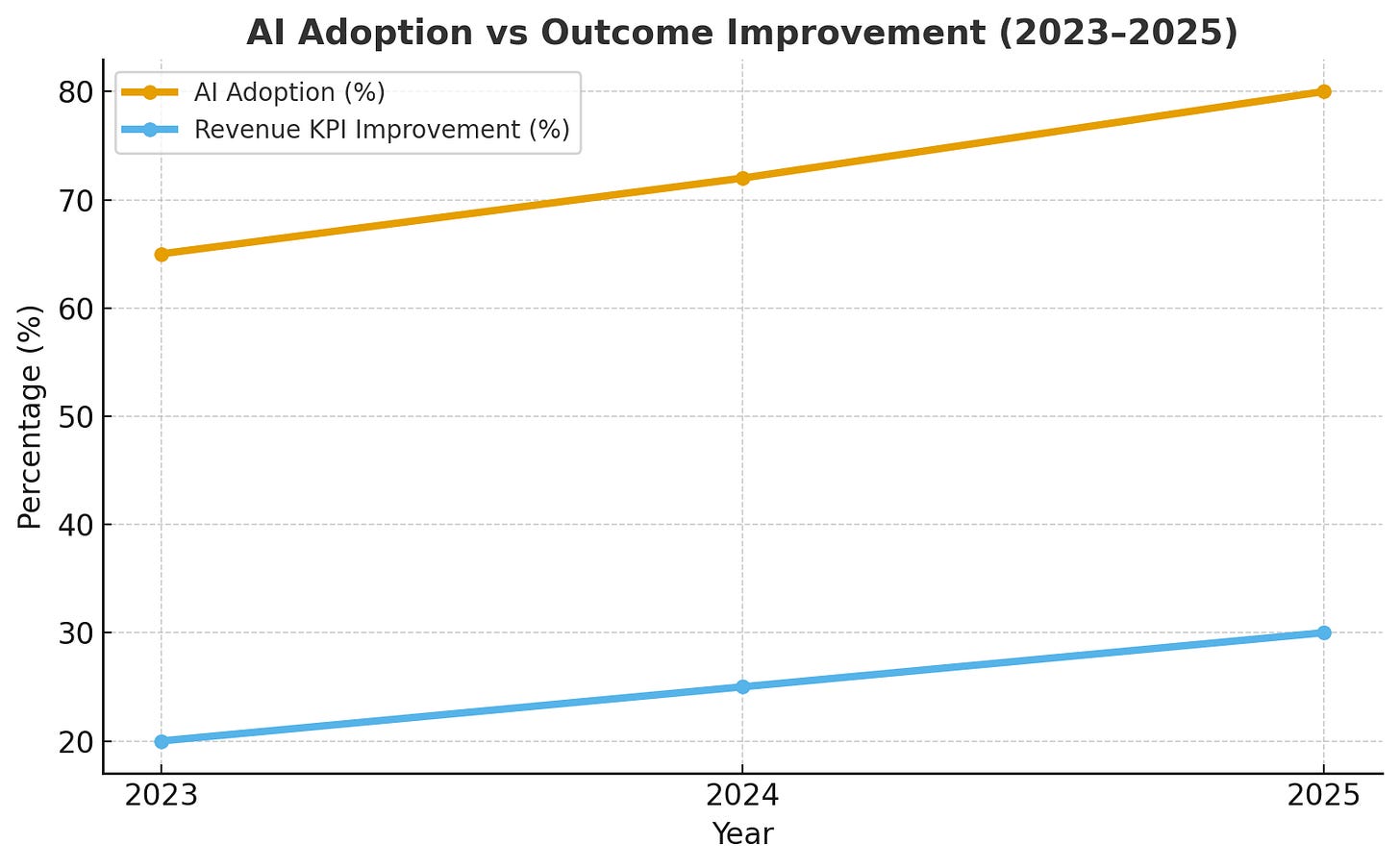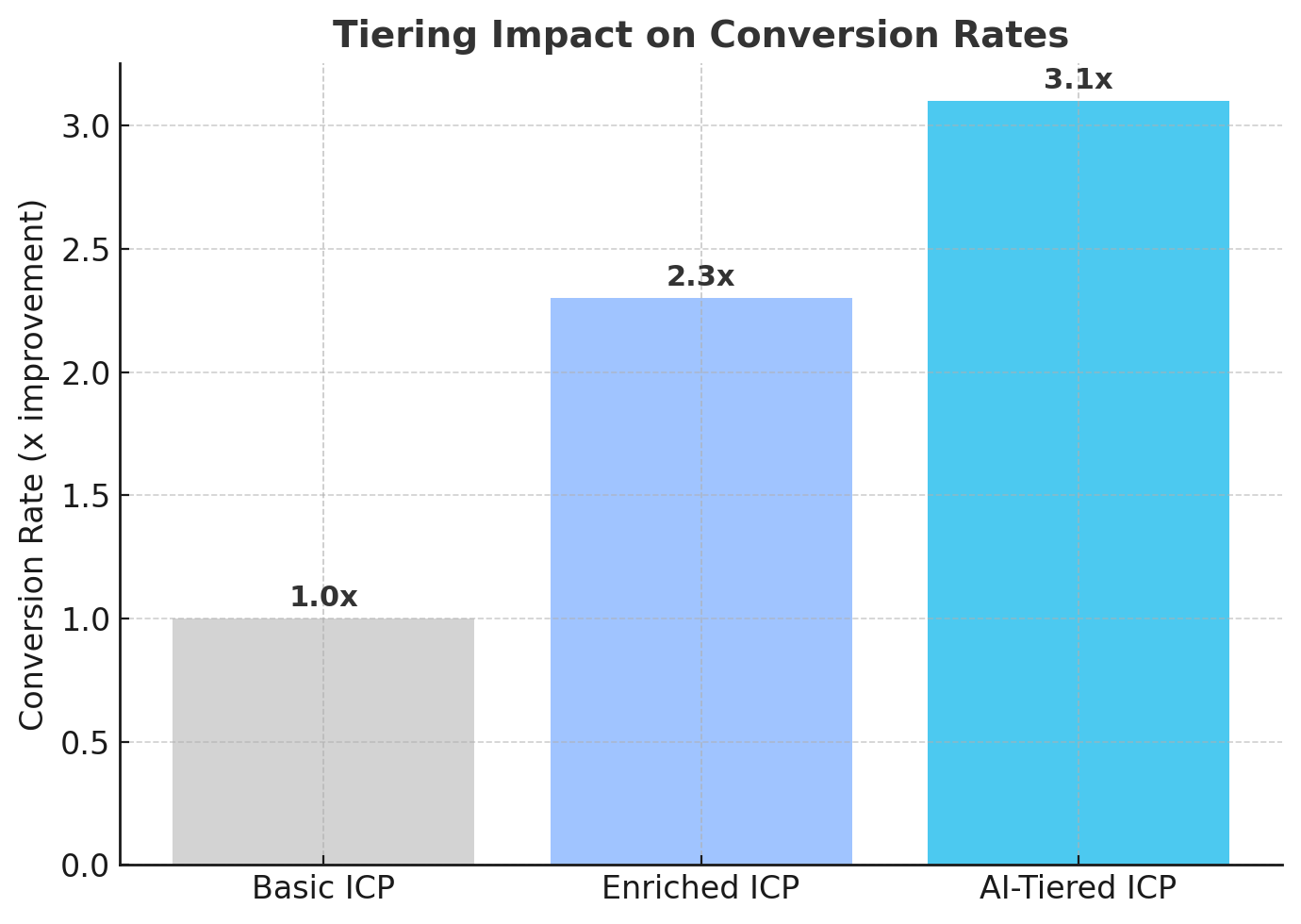Modern GTM Is Entering Phase 2: From Productivity to Intelligence
How to build a go-to-market system that doesn’t just automate work but compounds intelligence
Three years ago, GTM leaders were still debating whether to adopt AI. That conversation is over.
Two-thirds of GTM teams now use AI daily, and 85% report measurable gains.
But AI didn’t just make us faster — it changed what it means to be effective.
(This builds on AI Broke the GTM Playbook, where we unpacked the 10 shifts redefining how GTM teams operate in the AI era.)
According to Scale Venture Partners’ State of GTM AI 2025, the bigger story hides underneath those stats: most teams are still stuck in Phase 1.
Inside the full GTM Vault Pro edition:
The six systems defining Phase 2 of modern GTM
The architecture of a modern “System of Intelligence”
Attribution ratios and data flows for RevOps and GTM Engineering
A case study on how one startup rebuilt its motion around intelligence, not activity
The free version below breaks down the mindset shift from productivity to intelligence.
The full Pro edition walks through the systems that make it work.
Phase 1 is about doing more. Phase 2 is about doing better.
And the difference between those two is the difference between efficiency and leverage.
The Productivity Mirage
AI’s first act was speed: more emails, more content, more meetings. But those gains haven’t moved the real metrics that matter — pipeline, win rate, and NRR. We got faster, not smarter.
As the ScaleVP report shows, AI adoption is accelerating, but the impact curve is flattening. The next phase isn’t more adoption — it’s better integration.

Most GTM teams have automated activity but haven’t yet built systems that improve decision quality or outcomes.
AI’s next phase isn’t about replacing reps or marketers. It’s about building GTM systems that can think, decide, and improve without manual input.
“Most GTM teams aren’t short on effort. They’re short on intelligence.”
To move from productivity to precision, start by rethinking who you’re even trying to reach.
1. Redefine Your ICP with AI-Enabled Account Tiering
Your ICP can’t just be “industry, employee count, and revenue.” That was fine in 2019.
Today, the most advanced teams use richer, intent-driven data points. For example:
A privacy policy update within the last 30 days (new compliance motion)
Hiring 5+ data engineers (data maturity)
PLG SaaS pricing under $100 per month (bottom-up adoption)
$500M in e-commerce revenue (complex operational scale)
Then they automate it. Every new company entering their CRM is enriched, scored, and routed in real time.
That’s not enrichment. That’s sensing.
Your ICP stops being a list and becomes a live prediction engine.

When companies move from static targeting to AI-enriched, real-time tiering, they often see 2–3x gains in conversion precision.
Once you know which companies actually matter, the next step is understanding who inside them drives the motion.
2. Automate Persona Mapping with AI Classification
AI can tag every contact in your CRM automatically, based on real signals from job titles, descriptions, and context.
“VP of Engineering” becomes a Technical Buyer.
“Founder” becomes a Strategic Decision Maker.
“Product Manager” becomes a User Persona.
Those persona tags aren’t just for reporting. They drive personalization, messaging, and routing across your stack.
In the report, SDR teams that apply these Phase 2 classification workflows are three times likelier to increase SQLs.
That’s what happens when your system knows who to talk to and how to talk to them.
Now that your data is structured and your personas are clear, the real advantage comes from timing your moves.
3. Build Signal-Based Sales Plays
Everyone talks about intent data, but most teams still stop at the basics — website visits, funding rounds, job posts.
The real upside is in proprietary signals. Things only you can see. A product change in your category. A pricing page update from a competitor. A sudden surge in usage among freemium users.
These signals, once fed into an automated workflow, become the difference between chasing leads and catching them at the perfect moment.
Tools like Clay, Common Room, and Pocus make it possible to do this today. You feed the logic once, AI monitors continuously, and the system triggers plays the moment the timing is right.
That’s the shift. From targeting by segment to targeting by moment.
“The best sales playbooks aren’t written. They’re detected.”
Every signal needs a message that fits it. That’s where modular messaging becomes your multiplier.
4. Use AI for Message Modularity, Not Message Writing
AI isn’t supposed to write your emails. It’s supposed to make you faster at building the right ones.
The best teams use it to generate modular snippets inside a larger framework:
A signal snippet that anchors timing and relevance
A pain snippet that connects to the persona
A proof snippet that validates with social evidence
A CTA snippet that fits buyer readiness
Example:
Template:
Hey {{FirstName}},{{Signal_Snippet}}
{{Pain_Snippet}}
{{Proof_Snippet}}
{{CTA_Snippet}}Output:
Hey Sarah,Noticed your team just rolled out Databricks across engineering — curious if predictive QA has become a bottleneck yet.
Teams like Acme and Alloy cut testing time by 40% once they automated that workflow.
Worth a 10-minute chat to see how it fits?
This creates consistent quality across thousands of touches while keeping every message relevant. You stop worrying about personalization because your system is personalizing itself.
Once your plays and messaging land, the real test is how you measure impact.
(For a deep dive on predictive enablement and how AI-driven readiness systems are changing sales performance, watch Predictive Enablement with Christina Brady (Luster).)
Keep reading with a 7-day free trial
Subscribe to GTM Vault to keep reading this post and get 7 days of free access to the full post archives.


